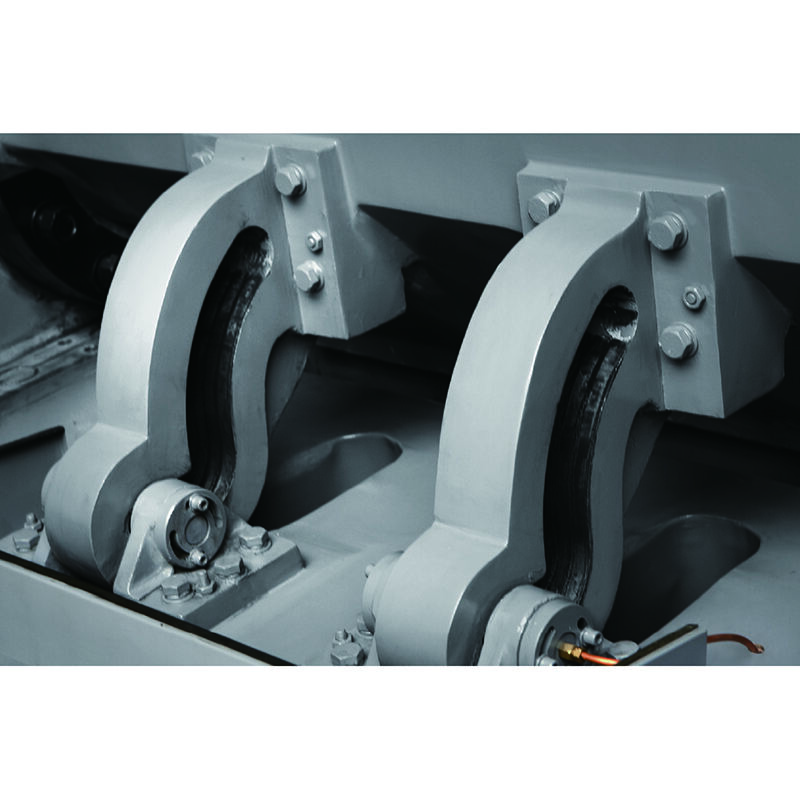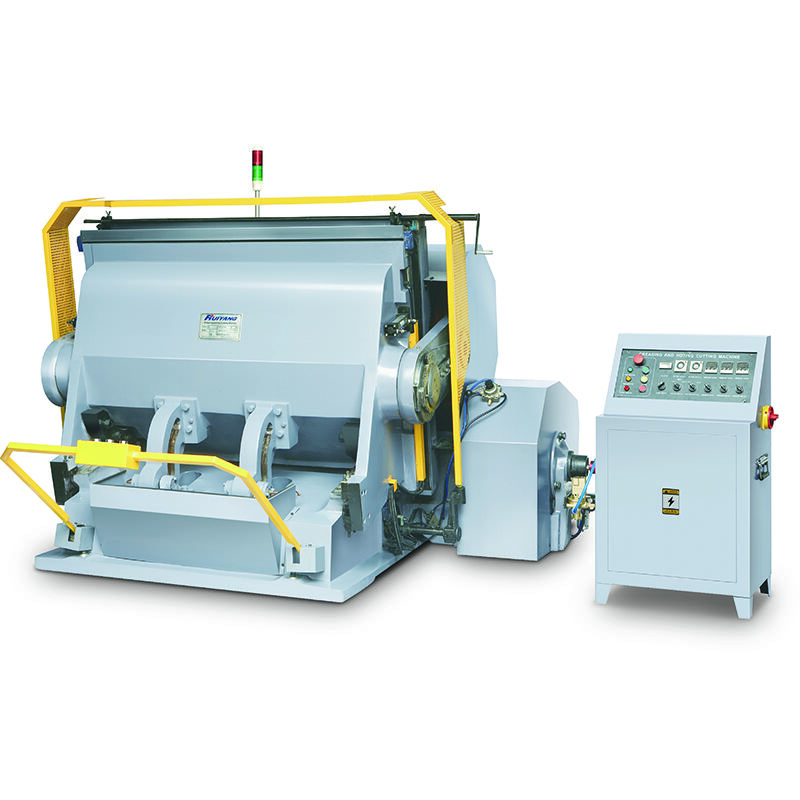Manual vs Automatic Creasing Machines: Cost & Efficiency Analysis
In the printing, packaging, and bookbinding industries, precision creasing is essential for producing professional, high-quality products. Whether creating folds for brochures, packaging boxes, greeting cards, or hardcover books, Creasing Machines ensure that folds are neat, accurate, and free from cracking. The choice between manual and automatic models has a significant impact on productivity, costs, and long-term profitability.
This in-depth analysis explores the differences between manual and automatic Creasing Machines in terms of functionality, cost, efficiency, and suitability for different business sizes and applications.
Understanding Creasing Machines
Creasing Machines create a groove in the paper, cardboard, or other substrates, allowing the material to fold more easily without damaging the surface or breaking printed ink. Unlike simple folding, creasing is vital for heavier or coated papers and for packaging boards, where precise folds are required to maintain structural integrity and aesthetics.
Modern Creasing Machines come in various designs — from compact desktop units for small print shops to fully automated, high-speed systems for large packaging plants. Choosing the right machine type depends on production volume, material types, budget, and workflow requirements.
Manual Creasing Machines
How They Work
Manual Creasing Machines require an operator to feed and position the material and apply pressure via a hand lever or foot pedal. The die or creasing bar presses into the substrate to create the fold line.
Advantages
-
Lower Initial Investment: Manual models are significantly cheaper to purchase, making them attractive for startups or small businesses.
-
Compact Size: Takes up less space, ideal for small workshops or offices.
-
Control Over Each Sheet: The operator can inspect every piece, ensuring quality control.
-
Lower Maintenance Costs: Simpler mechanical parts mean fewer breakdowns and lower servicing expenses.
Limitations
-
Slower Production Speed: Limited to the operator’s speed and endurance.
-
Higher Labor Costs Over Time: More manual handling increases staffing requirements for larger volumes.
-
Inconsistent Output in Large Runs: Fatigue or human error can affect consistency when producing thousands of units.
-
Not Ideal for High-Volume Jobs: Long runs can become time-consuming and less cost-effective.
Automatic Creasing Machines
How They Work
Automatic Creasing Machines feed, position, and crease the material automatically, often with programmable settings for multiple crease lines in one pass. Some models combine creasing with folding, perforating, or cutting, reducing the need for multiple machines.
Advantages
-
High-Speed Production: Can process hundreds or even thousands of sheets per hour without operator fatigue.
-
Consistent Quality: Automation ensures uniform pressure and alignment for every sheet.
-
Reduced Labor Costs: One operator can manage high output with minimal manual intervention.
-
Multi-Function Capabilities: Advanced models can handle creasing, perforating, and folding in a single workflow.
-
Better for Complex Jobs: Handles multiple crease lines, thicker materials, and large-format sheets efficiently.

Limitations
-
Higher Initial Cost: Significant investment required, which may be challenging for small operations.
-
Requires More Space: Larger footprint may not be suitable for all facilities.
-
Maintenance and Servicing Costs: More complex mechanisms require professional servicing, adding to operating expenses.
-
Training Required: Operators must be trained on programming and handling the machine correctly.
Cost Analysis: Manual vs Automatic
Initial Investment
Manual Creasing Machines can range from a few hundred to a couple of thousand dollars, depending on size and build quality. Automatic models start at several thousand dollars and can reach tens of thousands for industrial-grade machines.
For businesses with low to moderate output, the lower purchase price of manual machines can be appealing. However, the upfront cost of an automatic machine can be justified if the business regularly handles large volumes and can achieve a fast return on investment (ROI) through labor savings and increased productivity.
Operating Costs
Manual machines consume less electricity or none at all, depending on the design. Automatic machines require consistent power, and high-speed models may have higher energy consumption, but the labor savings often outweigh this expense.
Consumables like creasing bars, scoring wheels, and dies have similar costs for both types, but automation can help prolong their lifespan through precise pressure settings.
Labor and Productivity
Manual creasing is labor-intensive. An operator might process 200–500 sheets per hour on a manual machine, depending on complexity. Automatic machines can process 1,000–5,000 sheets per hour or more, drastically reducing labor hours for the same output.
If labor costs are high in your region, an automatic machine may deliver better long-term cost savings despite a higher initial price.
Maintenance Costs
Manual machines require minimal upkeep — usually occasional lubrication and alignment checks. Automatic machines have more moving parts, electronics, and sensors, which require regular professional servicing. This adds to ongoing costs but also ensures reliability in high-volume production.
Efficiency Analysis: Manual vs Automatic
Throughput
Automatic machines excel in throughput, making them ideal for large print runs, packaging orders, and commercial finishing operations. Manual machines are better suited to short-run, customized, or specialty jobs where flexibility and individual attention are more important than speed.
Quality Consistency
Automation ensures consistent pressure and crease depth, which is critical for brand consistency in packaging or for high-end printed materials. Manual operations can achieve excellent quality, but consistency may vary when fatigue sets in or when multiple operators are involved.
Versatility
Some manual Creasing Machines can be adjusted for different materials and crease depths, but automatic machines often come with programmable settings, quick-change tooling, and multiple crease positions in one pass. This flexibility gives automatic models an advantage in diverse production environments.
Scalability
If your business is growing and you expect production volumes to increase, investing in an automatic machine can future-proof your operations. Manual machines may eventually become a bottleneck as order sizes grow.
Choosing the Right Creasing Machine for Your Needs
When deciding between manual and automatic models, consider the following:
-
Production Volume: High volumes benefit from automation; low volumes may be handled efficiently with manual machines.
-
Budget: If capital investment is limited, start with a manual machine but plan for future upgrades.
-
Material Types: Heavier or coated stocks require consistent creasing pressure, which automation delivers reliably.
-
Available Space: Ensure you have the physical space for larger automatic units.
-
Labor Costs: In regions with high wages, automation can pay for itself more quickly.
-
Job Complexity: Multiple crease lines or large-format jobs are better suited to automatic systems.
Industry Trends in 2025
-
Hybrid Machines: Combining manual feed with automated creasing functions to balance cost and efficiency.
-
Smart Controls: Automatic machines now feature touchscreen interfaces, job memory storage, and IoT connectivity for remote monitoring.
-
Energy Efficiency: Manufacturers are developing automatic machines that consume less power without compromising performance.
-
Multi-Function Units: Creasing combined with cutting, perforating, and folding to reduce the need for multiple machines.
Conclusion
Both manual and automatic Creasing Machines have important roles in modern printing and packaging workflows. Manual machines remain a cost-effective choice for small businesses, specialty print shops, or those with low-volume, high-customization work. They offer simplicity, low maintenance, and control over each job.
Automatic Creasing Machines, on the other hand, dominate in high-volume, high-speed production where consistency, efficiency, and reduced labor costs are priorities. While the upfront investment is higher, the long-term savings and productivity gains often outweigh the cost, especially in competitive markets where quick turnaround is essential.
The decision ultimately depends on your current production demands, budget, and growth plans. For many businesses, starting with a manual model and upgrading to automation as demand increases offers the best balance between cost control and efficiency gains. However, for operations already handling large volumes, investing in an automatic machine from the start can provide a rapid return on investment and set the stage for scalable growth.
FAQ
How long does it take to learn to operate a Creasing Machine?
Manual models can be learned in a few hours, while automatic machines may require a few days of training to understand programming and maintenance.
Can one person operate an automatic Creasing Machine?
Yes, most automatic models are designed for single-operator use, even at high speeds.
Do automatic Creasing Machines work with all paper types?
They are compatible with a wide range of paper and board types, but operators should adjust settings for optimal results with different materials.
Is it worth upgrading from manual to automatic?
If your business volume is growing or you need faster turnaround times, the upgrade is often worth the investment.
How long does a Creasing Machine last?
With proper maintenance, both manual and automatic machines can last many years, often a decade or more, depending on usage.
Table of Contents
- Manual vs Automatic Creasing Machines: Cost & Efficiency Analysis
- Understanding Creasing Machines
- Manual Creasing Machines
- Automatic Creasing Machines
- Cost Analysis: Manual vs Automatic
- Efficiency Analysis: Manual vs Automatic
- Choosing the Right Creasing Machine for Your Needs
- Industry Trends in 2025
- Conclusion
- FAQ

